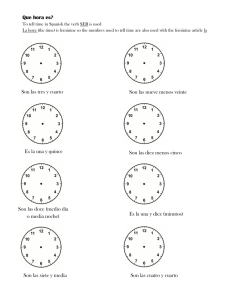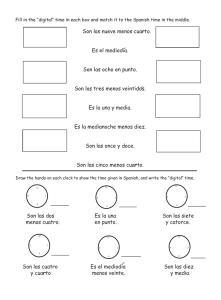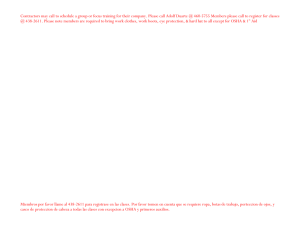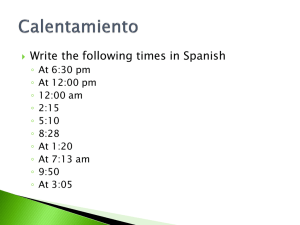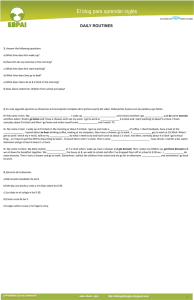Telling the time
Anuncio
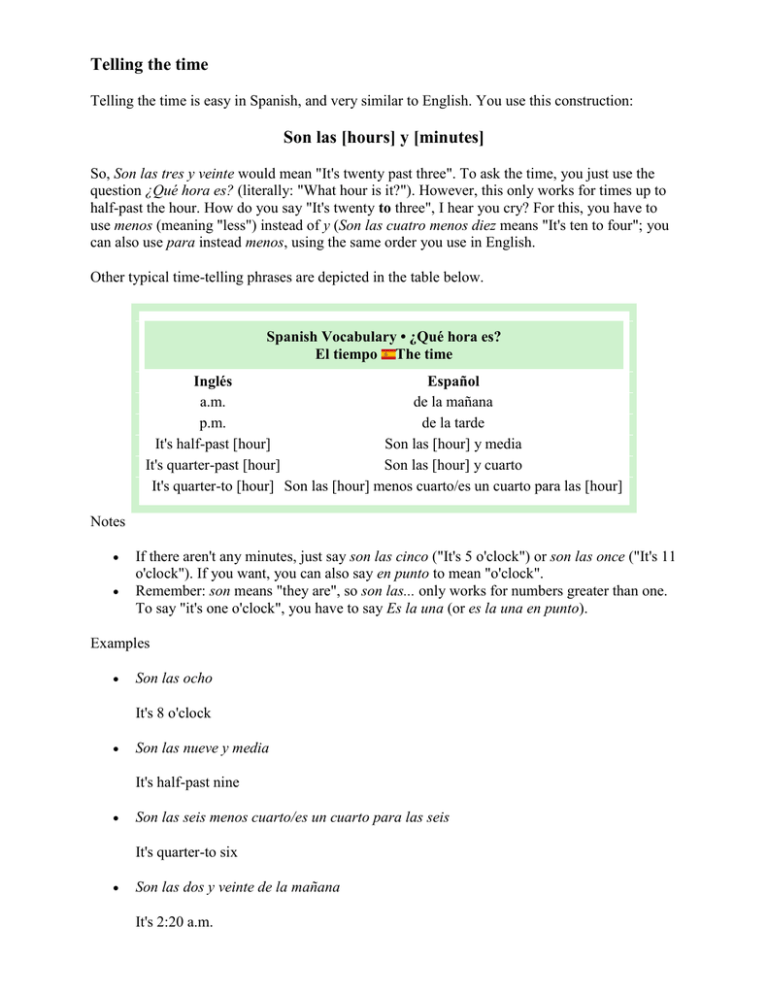
Telling the time Telling the time is easy in Spanish, and very similar to English. You use this construction: Son las [hours] y [minutes] So, Son las tres y veinte would mean "It's twenty past three". To ask the time, you just use the question ¿Qué hora es? (literally: "What hour is it?"). However, this only works for times up to half-past the hour. How do you say "It's twenty to three", I hear you cry? For this, you have to use menos (meaning "less") instead of y (Son las cuatro menos diez means "It's ten to four"; you can also use para instead menos, using the same order you use in English. Other typical time-telling phrases are depicted in the table below. Spanish Vocabulary • ¿Qué hora es? El tiempo The time Inglés Español a.m. de la mañana p.m. de la tarde It's half-past [hour] Son las [hour] y media It's quarter-past [hour] Son las [hour] y cuarto It's quarter-to [hour] Son las [hour] menos cuarto/es un cuarto para las [hour] Notes If there aren't any minutes, just say son las cinco ("It's 5 o'clock") or son las once ("It's 11 o'clock"). If you want, you can also say en punto to mean "o'clock". Remember: son means "they are", so son las... only works for numbers greater than one. To say "it's one o'clock", you have to say Es la una (or es la una en punto). Examples Son las ocho It's 8 o'clock Son las nueve y media It's half-past nine Son las seis menos cuarto/es un cuarto para las seis It's quarter-to six Son las dos y veinte de la mañana It's 2:20 a.m. When? So, you now know how to tell the time in Spanish. Now let's use it to describe when something happens. To do this, you use a las followed by the time as described above (a las tres means "at 3 o'clock"). But what if you don't know a specific time? What about just "In the evening"? Just use por la, followed by one of the entries in the table (por la noche means "at night"): Spanish Vocabulary • ¿Qué hora es? Los tiempos del día The times of the day Inglés Morning Afternoon Evening Night Español Mañana Tarde Noche Notes Since these times-of-day are all feminine, "por la" is the prepositional phrase used with them. Examples A las ocho de la mañana, tomo mi desayuno. At 8:00am, I eat breakfast. Por la tarde, le gusta ver la tele. In the evening, He likes watching TV. Por la noche, les gusta mucho beber leche. At night, they love drinking milk.

